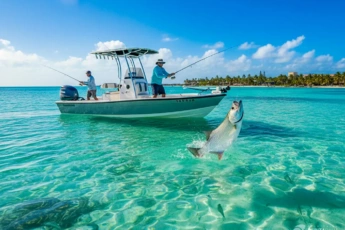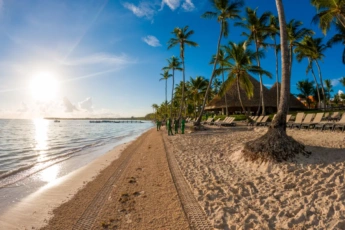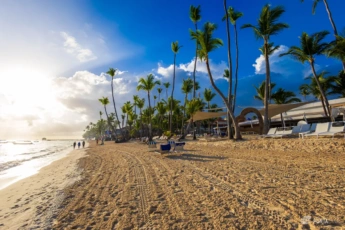Exploring Dominican Republic Wildlife - What to Know About Animals and Nature in 2025
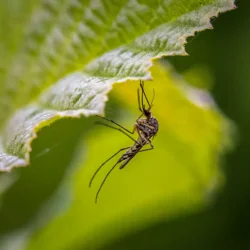
Mosquitoes in the Dominican Republic – Best repellents 2025, mosquito season, and how to avoid diseases
Should we beware of mosquitoes in the Dominican Republic, where and when they are more common, how to avoid the effects of mosquito bites, and what is the first aid for bites? We will describe in the article some…
Read more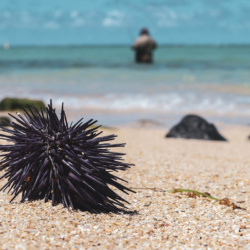
Are there any dangerous animals in the Dominican Republic in 2025?
You have decided to get away from the daily routine, gather your thoughts, swim in the ocean, soak up the sunshine, and choose the Dominican Republic for a vacation. It is a country with a tropical climate. Thereby you…
Read more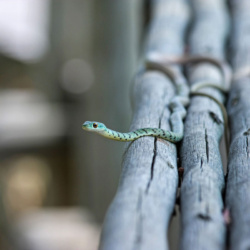
Are There Any Poisonous Snakes in the Dominican Republic?
The Dominican Republic has a tropical climate and jungles with over 900 miles of coastline. This country is known for its range of wildlife and, of course, there are some snakes. About 20 species are found in the central…
Read moreThe Dominican Republic, situated on the island of Hispaniola in the Caribbean, is home to a rich and diverse array of wildlife. From lush rainforests to vibrant coral reefs, this tropical paradise boasts a variety of ecosystems that support unique flora and fauna.
Let's explore together the native species, endangered animals, and conservation efforts that make the Dominican Republic a haven for biodiversity.
Native Species in the Dominican Republic
The wildlife of the Dominican Republic includes many species that are endemic to the island. These species are found nowhere else in the world, making them a critical part of the country's natural heritage.
Dominican species and facts
| Species | Habitat | Diet | Fun facts |
|---|---|---|---|
| Solenodon | Forests and mountainous regions | Insects, small reptiles, and plants | One of the few venomous mammals, it injects venom through grooves in its teeth. |
| Hispaniolan parrot | Tropical forests and savannas | Fruits, seeds, and flowers | Famous for their mimicry abilities and vibrant red-throated plumage. |
| Rhinoceros iguana | Dry forests, scrublands, and rocky terrains | Fruits, leaves, and flowers | Named for the horn-like structures on their snouts; critical for seed dispersal. |
| Hispaniolan trogon | Montane forests | Insects and fruits | The national bird of the Dominican Republic symbolizes the island's natural beauty. |
| Hispaniolan boa | Forests and caves | Small mammals and birds | Non-venomous; uses constriction to capture prey and plays a role in controlling rodent populations. |
The wildlife of the Dominican Republic is a treasure trove of unique and fascinating species, many of which are endemic to the island. These animals are essential for maintaining ecological balance and serve as a reminder of the importance of preserving the country's natural heritage. By understanding and appreciating this incredible biodiversity, we can contribute to its preservation for future generations.
Marine Life of the Dominican Republic
The country's marine biodiversity is a vital component of its ecological and economic landscape. From the majestic humpback whales that grace Samana Bay during migration to the critically endangered hawksbill turtles that inhabit coral reefs, these species represent the richness and fragility of the marine ecosystem.
Key marine species of the Dominican Republic
| Species | Habitat | Diet | Fun facts |
|---|---|---|---|
| Humpback whale | Observed during migration in Samana Bay | Krill and small fish | Known for their acrobatic breaches and haunting songs used for communication. |
| Hawksbill turtle | Coral reefs and coastal waters | Sponges, jellyfish, and marine vegetation | Named for their distinctive pointed beak, these turtles play a crucial role in maintaining coral reef ecosystems. |
| Queen angelfish | Coral reefs | Sponges and algae | Recognizable by their vibrant blue and yellow coloration; often seen in pairs. |
| Green sea turtle | Seagrass beds and coastal waters | Seagrasses and algae | They can live up to 80 years and are essential for maintaining healthy seagrass beds. |
| Caribbean reef shark | Coral reefs and open waters | Fish, squid, and crustaceans | A vital apex predator that helps regulate marine ecosystems. |
Conservation efforts are essential to protect these species and their habitats from habitat destruction, illegal poaching, and climate change threats. By raising awareness and promoting sustainable practices, we can ensure that the waters of the Dominican Republic remain a haven for marine wildlife for generations to come.
Key Dominican Ecosystems
The Dominican Republic's varied ecosystems include rainforests, mangroves, and coastal areas, each supporting unique species and ecological processes. Here are some of the most notable ecosystems:
- Rainforests. Found in mountainous regions such as the Cordillera Central, these forests are home to many endemic bird species.
- Mangroves. Essential for protecting coastlines and supporting marine life, mangroves are found along the southern and eastern coasts.
- Coral reefs. These underwater ecosystems are teeming with marine biodiversity and play a crucial role in tourism and fishing industries.
Endangered Species in the DR
Several species in the Dominican Republic face threats due to habitat loss, climate change, and human activities. Conservation efforts are underway to protect these animals.
Endangered species of the DR
| Species | Threats | Habitat | Conservation Efforts |
|---|---|---|---|
| Hispaniolan Hutia | Deforestation and hunting | Forests and rocky areas | Habitat protection and hunting restrictions |
| West Indian Manatee | Boat collisions and habitat destruction | Coastal waters and estuaries | Marine sanctuaries and public awareness campaigns |
| Hawksbill Turtle | Illegal poaching and habitat loss | Coral reefs and sandy beaches | Beach patrols and international treaties |
| Ridgeway Hawk | Deforestation and hunting | Lowland forests | Captive breeding and habitat restoration |
| Hispaniolan Solenodon | Predation by introduced species | Forests and grasslands | Wildlife monitoring and predator control |
| American Crocodile | Habitat destruction and illegal hunting | Brackish waters and lagoons | Wetland preservation programs |
The Dominican Republic’s wildlife is both a treasure and a responsibility. While the nation boasts remarkable biodiversity, many species face significant threats due to human activities and environmental changes. Conservation efforts, including habitat preservation, public education, and enforcement of environmental laws, play a crucial role in protecting these unique creatures.
Conservation Efforts in the Dominican Republic
The DR has implemented various initiatives to protect its wildlife. National parks, such as Parque Nacional del Este and Jaragua National Park, play a crucial role in preserving biodiversity. Additionally, organizations like Grupo Jaragua work tirelessly to educate the public and advocate for environmental policies.
Conclusion
The wildlife of the Dominican Republic is a treasure trove of biodiversity that must be preserved for future generations. From its unique endemic species to its vibrant marine life, this Caribbean nation offers a glimpse into the wonders of nature. By supporting conservation efforts and promoting sustainable tourism, we can help ensure the survival of these incredible ecosystems and the animals that call them home.
Frequently asked questions about
wildlife of the Dominican Republic
1. Are there any wild animals in the Dominican Republic?
Yes, the Dominican Republic is home to a variety of wild animals, thanks to its diverse ecosystems that include tropical rainforests, mangroves, coral reefs, and savannahs. While the island has fewer large mammals due to its island nature, you’ll find a fascinating range of native and endemic species. Examples include:
- Hispaniolan Solenodon (Solenodon paradoxus). A nocturnal, shrew-like mammal that is one of the few venomous mammals in the world.
- Hispaniolan Hutia (Plagiodontia aedium). A rodent-like mammal that lives in forests and rocky areas.
- Birds. The Dominican Republic is a birdwatcher’s paradise, with over 300 species, including flamingos, the Hispaniolan Trogon (the national bird), and pelicans.
- Reptiles. Iguanas, geckos, and various lizards thrive here.
- Marine life. Coral reefs host vibrant species like parrotfish, sea turtles, and rays.
While exploring the wild, it’s important to respect these animals’ natural habitats and avoid disturbing them.
2. Are there big cats in the Dominican Republic?
No, there are no native big cats like lions, tigers, or jaguars in the Dominican Republic. However, smaller predators such as the mongoose have been introduced and are occasionally spotted. Historically, the island’s isolation prevented the migration of large terrestrial predators.
The closest thing to a “big cat” encounter would be at wildlife parks or private zoos, where you might see imported exotic species, but these are not naturally part of the Dominican ecosystem.
3. What wildlife will I see in Punta Cana?
Punta Cana offers a mix of wildlife experiences, from land to sea. Common wildlife sightings include:
- Birds. Egrets, herons, and pelicans near the coast. Parrots and hummingbirds in tropical gardens.
- Marine life. Coral reefs near Punta Cana house vibrant fish like angelfish, clownfish, and barracudas. Sea turtles can be spotted while snorkeling or diving. Whale watching is popular from January to March when humpback whales migrate near the island.
- Land animals. Iguanas basking in the sun. Agoutis (small, rodent-like mammals) in forested areas.
For a more curated wildlife experience, visit parks like Indigenous Eyes Ecological Park or Los Haitises National Park, where you can see endemic plants and animals.
4. Are there snakes in the Dominican Republic?
Yes, the Dominican Republic has snakes, but they are generally non-venomous and pose little threat to humans. The island is home to several species like Hispaniolan Boa, Hispaniolan Vine Snake, Antillean Racer, etc. More information you can find in this article.
There are no poisonous snakes native to the Dominican Republic, making it relatively safe compared to other tropical destinations. However, you should always be cautious when hiking in dense vegetation and avoid handling any wildlife.
5. Does the Dominican Republic have sharks?
Yes, sharks are found in the waters around the Dominican Republic, particularly in deeper, offshore areas. However, shark attacks are extremely rare due to the island’s clear waters and the types of sharks that inhabit the region. Common species include:
Shark species in the Dominican Republic
| Shark species | Description |
|---|---|
| Nurse shark | Non-aggressive and often seen while snorkeling or diving. |
| Caribbean reef shark | Common around coral reefs but generally avoids humans. |
| Whale shark | The largest fish in the ocean, harmless to humans, and occasionally spotted. |
Shark encounters are rare in shallow waters where most tourists swim. The best way to see sharks safely is through diving excursions led by professionals. Additionally, many marine areas are protected by coral reefs, further reducing the likelihood of shark interactions.
6. Are there wild monkeys in the Dominican Republic?
Yes, there are monkeys in the Dominican Republic, but they are not native to the island. The most commonly seen monkeys are the Capuchin Monkeys, which were introduced and can be found in controlled environments like wildlife parks or on specific eco-tourism excursions, such as the popular Monkeyland near Punta Cana.
These monkeys are friendly and often interact with visitors during tours. However, you won’t find large populations of wild monkeys in the forests or jungles because they are not part of the island’s original ecosystem.
7. Which Caribbean island has the most wildlife?
The Caribbean islands all boast unique biodiversity, but Cuba and Hispaniola (Dominican Republic and Haiti) are considered to have the most diverse wildlife.
- Cuba is famous for endemic species like the Cuban Crocodile, Bee Hummingbird (the world’s smallest bird), and Cuban Solenodon. Its forests and wetlands are teeming with birds, reptiles, and marine life.
- Hispaniola offers a mix of endemic species, such as the Hispaniolan Solenodon, Hutia, and a wide variety of birds and reptiles.
The Dominican Republic, as part of Hispaniola, stands out for its marine biodiversity, coral reefs, and whale-watching opportunities.
8. Are there jaguars in the Caribbean?
No, there are no jaguars in the Caribbean. Jaguars are native to the Americas but are primarily found in mainland Central and South America, as well as parts of Mexico.
The Caribbean islands do not have large native predators like jaguars due to their isolation and limited landmass, which restricts the development of ecosystems capable of supporting such large predators.
9. Do you get crocodiles in the Dominican Republic?
No, the Dominican Republic does not have native crocodiles. However, the neighboring island of Cuba is home to the Cuban Crocodile (Crocodylus rhombifer), which is endemic to that region.
In the Dominican Republic, the closest crocodile-like species you might encounter are American crocodiles (Crocodylus acutus), but these are rarely seen and are not common. Most of the country’s water ecosystems are free of crocodiles, making it safe for recreational water activities.
10. Is it safe to swim in the Dominican Republic?
Yes, it is generally safe to swim in the Dominican Republic, especially in designated swimming areas along the beaches. However, safety depends on the location and the season. Here are a few points to consider:
Safety tips for swimming in the Dominican Republic
| Factor | Details |
|---|---|
| Beach flags | Pay attention to beach warning flags. Red indicates dangerous conditions. |
| Rip currents | Some beaches, particularly on the Atlantic side, may have strong currents. |
| Marine life | While most marine life is harmless, avoid stepping on coral or stingrays. |
| Sharks | Shark encounters are rare; stick to shallow, clear waters. |
| Jellyfish | Occasional jellyfish stings can occur; inquire locally if they are present. |
Swimming in resort areas like Punta Cana or Bávaro is particularly safe due to calm waters protected by coral reefs. Always check for safety advisories and follow local guidelines.
11. What animal is only found in the Dominican Republic?
The Hispaniolan Solenodon (Solenodon paradoxus) is an animal unique to the Dominican Republic and Haiti. It is an ancient, nocturnal mammal that resembles a shrew with a long, flexible snout. What makes it extraordinary is that it’s one of the few venomous mammals in the world, delivering venom through grooves in its teeth.
Another notable endemic species is the Hispaniolan Hutia (Plagiodontia aedium), a rodent-like mammal often found in forests and rocky areas.
Both of these species are endangered and protected due to habitat loss and predation by introduced species like dogs and cats.
12. Are there sharks in Bavaro Beach?
Yes, sharks can be found in the waters near Bávaro Beach, but encounters are extremely rare. The area’s coral reef system acts as a natural barrier, making the waters calm and limiting the presence of larger marine predators.
Common shark species in the Dominican Republic’s waters include:
- Nurse sharks are non-aggressive and often spotted during diving tours.
- Caribbean reef sharks generally avoid humans and stay near reefs.
- Whale sharks are occasionally seen offshore, but they are harmless filter feeders.
Swimming and snorkeling at Bávaro Beach are considered very safe, as sharks rarely venture into shallow waters frequented by tourists.
13. What kind of bugs bite in the Dominican Republic?
The Dominican Republic is home to several biting insects, especially in tropical and forested areas. Common biting bugs include:
Biting bugs in the Dominican Republic
| Bug | Effect | Prevention tips |
|---|---|---|
| Mosquitoes | May carry diseases like dengue, chikungunya, or Zika. | Use DEET-based repellents, wear long sleeves, and stay indoors during dusk and dawn. |
| Sandflies (no-see-ums) | Cause itchy, red bites and are common on beaches. | Apply insect repellent, especially at sunset, and avoid sitting directly on the sand. |
| Fire ants | Deliver painful stings, often when disturbed. | Be cautious when walking in grassy or forested areas. |
| Bees and wasps | Stings can cause mild to severe allergic reactions. | Avoid disturbing hives and inspect outdoor seating areas. |
| Bed bugs | Found in some accommodations, leaving itchy bites in clusters. | Check hotel bedding and request a room change if signs of infestation are visible. |
Most bites are preventable with proper precautions, including the use of insect repellents and protective clothing.
14. What is the largest animal in the Dominican Republic?
The humpback whale (Megaptera novaeangliae) is the largest animal associated with the Dominican Republic. These majestic marine mammals migrate to the country’s warm waters during the winter months (January to March) to mate and give birth.
On land, the Hispaniolan Boa (Chilabothrus striatus) is the largest native terrestrial animal. This snake can grow up to 13 feet (4 meters) long and plays an important role in controlling rodent populations.
15. Does the Dominican Republic have whales?
Yes, the Dominican Republic is one of the best places in the Caribbean to see whales. Every year, from January to March, humpback whales migrate to the Samaná Bay and surrounding waters to mate and give birth.
Tourists can go on whale-watching tours from cities like Samaná or Puerto Plata to witness these incredible creatures breaching and singing. This migration is a major draw for eco-tourism and one of the country’s most iconic natural spectacles.
16. Are there monkeys in Punta Cana?
Yes, you can see monkeys in Punta Cana, but they are not wild. The Capuchin Monkeys in the region are housed in wildlife attractions like Monkeyland, a popular eco-park where visitors can interact with them. These monkeys were introduced to the Dominican Republic and are not native to the island.
You will not encounter wild monkeys in the forests or jungles around Punta Cana, as the country does not have a native monkey population.

